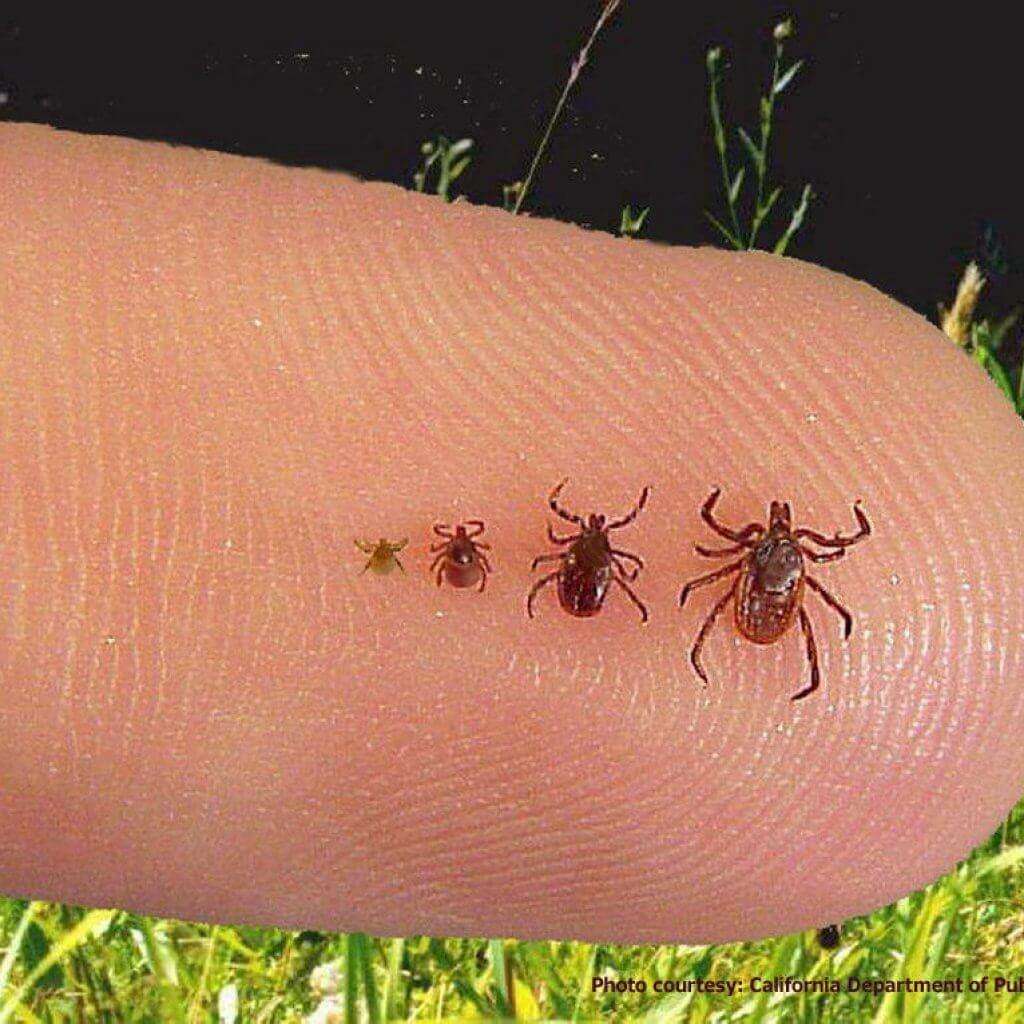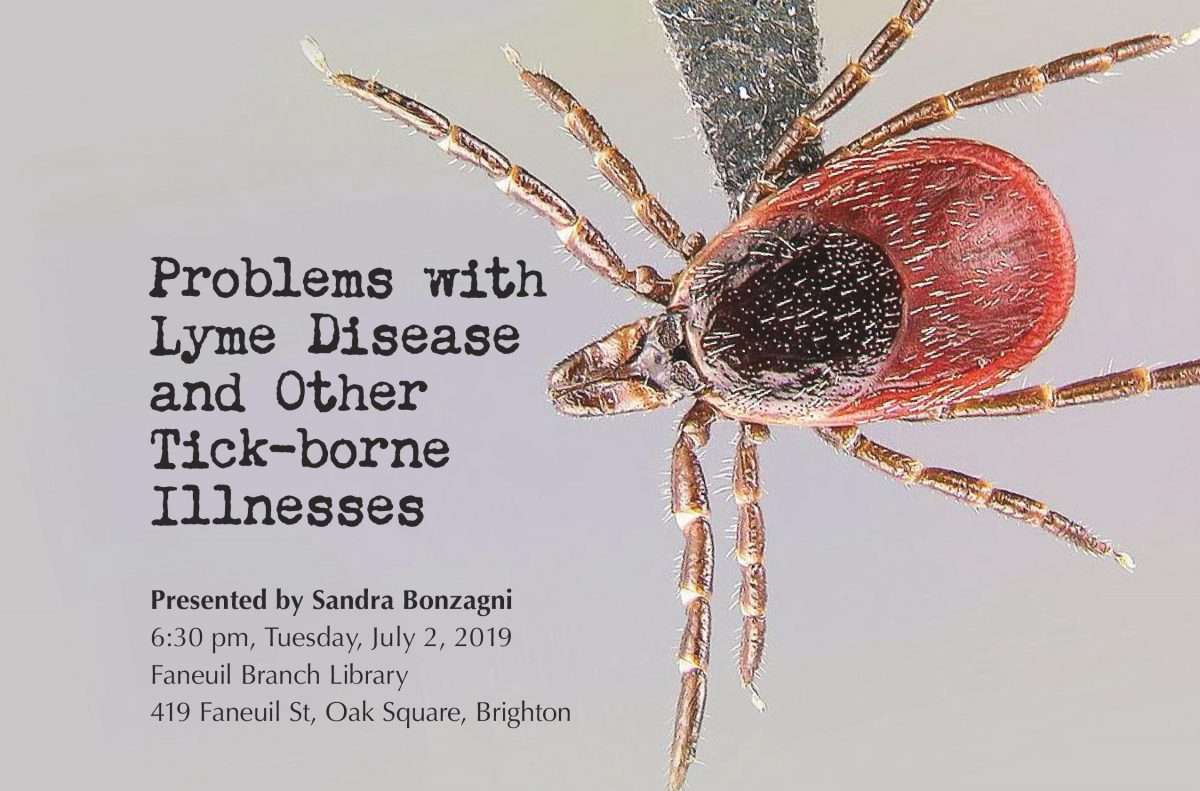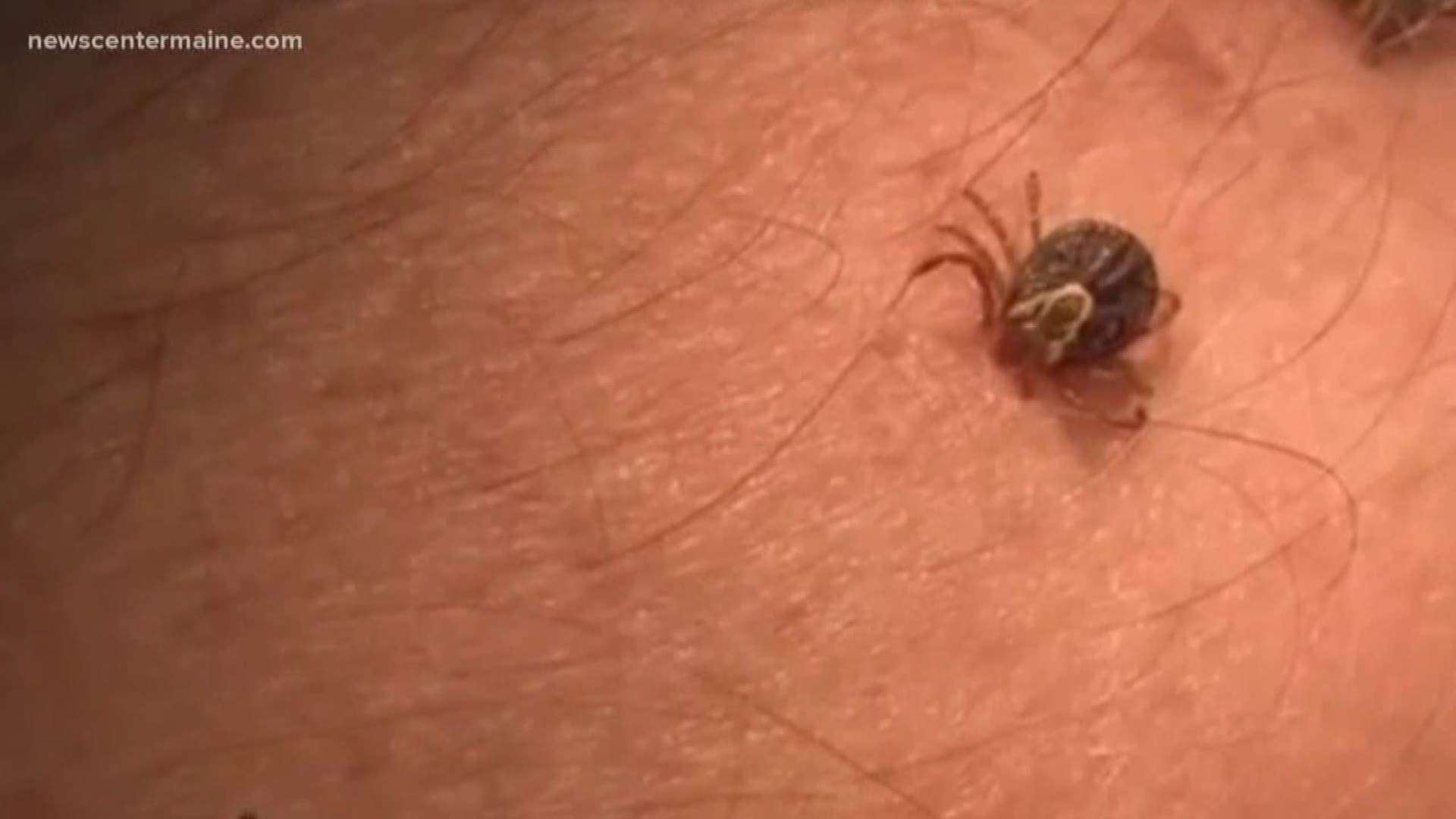Testing Ticks For Diseases
Testing ticks for diseases is not recommended because:
- If you have been infected, you may develop symptoms before results are available.
- A tick that tests positive for a tick-borne disease may not have been attached long enough to infect you.
- Even if the tick tests negative, it is possible you were unknowingly bitten by a different tick that might have infected you.
If you think you were bitten by a tick or are experiencing symptoms, contact your doctor.
When To Seek Medical Attention
Visit your health-care provider for assistance in removing a deeply embedded tick as soon as possible if:
- you are not comfortable with removing a tick
- you cannot safely remove the whole tick
If you develop a rash, fever or flu-like symptoms within 30 days of a known tick exposure, talk to your health-care provider about your recent tick bite, when it occurred and where you likely acquired the tick. A health-care provider does not require a tick in order to make diagnoses. However, if the tick is available, it may be submitted for further testing at the request of your health-care provider.
How To Get A Tick Tested
Ticks can be tested dead or alive . If you have removed a tick and want to have it tested, you have two options:
- Store it on a damp paper towel or cotton swab in a sealed plastic vial or ziploc bag.
- Securely attach the tick with tape to a piece of paper.
If the tick is already dead, there is no need to keep it moist. DO NOT store the tick in alcohol as it may compromise the test results.
You may choose to save the tick for testing should you begin to experience symptoms, rather than have it tested immediately.
DO note the date and location of the tick bite. If possible you should record:
- Date
- Location where tick attached
- Location on body where tick was removed
- Any other details about physical symptoms or location where tick was encountered
You May Like: Rocky Mountain Spotted Fever Vs Lyme Disease
Recognizing The Rash After A Tick Bite
It is important to understand that a rash is not always present or easily recognizable in early Lyme disease, and this can lead to delayed diagnosis and treatment.
Please refer to our poster of varied Lyme disease rash manifestations as a helpful identification tool.
When present, it is wise to take a picture of the rash with the date for your medical record, since a rash compatible with erythema migrans rash should prompt urgent evaluation and treatment. Lyme disease is most successfully treated in this first stage.
If you have a suspicious rash or your symptoms persist, please seek medical care immediately.
The erythema migrans Lyme disease rash is:
- Round or oval, enlarges in size over days/weeks, & will not fade in a few days
- Usually greater than 2 inches in diameter, often 6-8
- Usually uniformly red
- Sometimes but not often, a bulls eye rash with a red ring surrounding a clear area and red center
- Minimally tender, minimally itchy , and sometimes warm
- Often confused with spider bites
The incubation period from tick bite to rash is usually 3-10 days but can be 30 days.
The Lyme rash can spread through the bloodstream to other areas of the skin.
Sometimes blisters develop in the center of the rash.
Tick bite reactions are often confused with the rash of Lyme disease.
Tick bite reactions:
Lyme Disease Symptoms To Look For

A bump or irritation is expected after any insect bite, but when the rash gets bigger or appears as a bullseye , its time to call a doctor.
Other early Lyme disease symptoms include a fever and flu-like symptoms, fatigue, swollen lymph nodes, joint pains, and muscle aches. Later stage Lyme disease symptoms consist of rapid heartbeat, headaches, poor memory, arthritis, and swollen joints. Call a doctor if you experience any of these symptoms.
If the tick is collected and saved after the bite, send the tick to a testing lab, for any tick-borne diseases even before experiencing any symptoms of illness.
Recommended Reading: How To Find A Lyme Literate Doctor
Where Can You Get The Tick Tested For Lyme Disease
Lyme disease testing is ordered when you have signs and symptoms suggesting an infection with Borrelia and you live in or visited a region where deer ticks are common, especially when you were recently bitten by a tick. Testing may be repeated a few weeks later when initial testing is negative but suspicion of Lyme disease remains high.
How To Remove A Tick
Recommended Reading: How Long To Treat Lyme Disease
Do All Ticks Carry Lyme Disease
Most people who get tick bites do not get Lyme disease. Not all ticks are infected, and the risk for contracting the disease increases the longer the tick is attached to the body. Within one to four weeks of being bitten by an infected tick, most people will experience some symptoms of Lyme disease.
Tick Identification And Testing Locations
The following organizations, listed alphabetically, do offer tick identification and/or testing services for a fee.The listing of these organizations does not constitute an endorsement by the Massachusetts Department of Public Health of the organization, or information, products, or services provided, and none should be inferred. This list is provided as a guide to tick identification and/or testing services available for Massachusetts’ residents.This list may not be comprehensive and the contact and price information may change at any time. The information was up-to-date as of Any questions people have about situations that may affect their health should be directed to their health care provider.
Also Check: What Antibiotic Is For Lyme Disease
The Role Of Lyme Disease Tests
The purpose of the most common type of Lyme disease testing is to determine whether you have developed antibodies as a result of past exposure to the Borrelia bacteria that cause Lyme disease. Antibodies are proteins created by the immune system that target specific threats like bacteria and viruses.
Blood testing alone cannot determine whether you have Lyme disease. Instead, testing can provide helpful information that your doctor can consider along with other factors, such as any symptoms youve had and whether youve been exposed to ticks that can carry Borrelia, to determine if a diagnosis of Lyme disease is appropriate.
Beyond blood testing, it is possible to analyze fluid from the central nervous system for signs of the Borrelia bacteria.
Investigation Of Suspected Lyme Disease
Erythema migrans is a clinical diagnosis and does not require confirmation by laboratory testing. Lyme disease is not a notifiable disease so there is no statutory requirement to notify clinically suspected cases to the local Health Protection Team.
The 2018 NICE Lyme disease guideline provides detailed advice about when a diagnosis of Lyme disease should be suspected and about which tests to use and when.
The NICE Lyme disease guideline also contains a useful summary diagram of the routine serological testing recommendations for Lyme disease.
You May Like: How To Treat Lyme Disease In Child
Serological Testing Of Csf For The Diagnosis Of Neurological Lyme Disease
Serological testing for neurological Lyme disease is based on demonstrating intrathecal synthesis of Borrelia-specific antibodies in CSF. For laboratory testing for neurological Lyme disease, separate IgG and IgM ViraChip® serology assays are performed on CSF and paired serum and the results compared.
CSF samples must be tested in parallel with a contemporaneous serum sample and protein and immunoglobulin levels compared between the two sample types to produce a meaningful result.
Also Check: Deer Ticks Carry Lyme Disease
How To Avoid Getting A Tick Bite

You might be at risk if you live, work in, or visit a wooded area, or an area with tall grasses and bushes .
You may also be at risk if you are involved in outdoor activities such as hiking, camping and gardening.
You may be bitten by a tick and not even know it.
Heres what you can do to avoid getting a tick bite.
You May Like: Does Lyme Disease Cause Ms
What If Lyme Disease Goes Untreated
If Lyme disease goes untreated, it can affect other systems in the body. According to the , common symptoms of later stage Lyme disease include:
- severe headaches and neck stiffness
- additional erythema migrans rashes on other areas of the body
- facial palsy, which is a loss of muscle tone or droop on one or both sides of the face
- arthritis with severe joint pain and swelling, particularly in the knees and other large joints
- intermittent pain in tendons, muscles, joints, and bones
- heart palpitations or an irregular heartbeat
- episodes of dizziness or shortness of breath
- inflammation of the brain and spinal cord
- nerve pain
- shooting pains, numbness, or tingling in the hands or feet
Where Can I Send Ticks For Identification And Disease Testing
- The University of Maine Cooperative Extension offers a free tick identification and state of engorgement service. You can mail or drop-off ticks.
- Ticks sent to UMaine Cooperative Extension help researchers chart the density and locations of tick species in the state.
- UMaine Cooperative Extension can also test ticks for the presence of Lyme disease, anaplasmosis, and babesiosis. This is only available for Maine residents. The testing of tick samples is intended to provide information on ticks in Maine and is not intended to be used in human healh assessment or to be interpreted as a medical diagnosis.
- Other labs can perform testing on ticks, including:
- Connecticut Veterinary Medical Diagnostic Laboratory
Read Also: Land For Sale In East Lyme Ct
What If Your Lyme Disease Test Is Positive
Its important to note that a positive result doesnt mean you have a diagnosis of Lyme disease. The tests will show that antibodies are present in your blood, but a doctor will need to order another type of test before you get an official diagnosis.
If someone gets a positive at-home test, definitely see your doctor, says Dr. Puja Uppal, a board certified family medicine physician and the chief medical officer at Think Healthy.
The Blood Tests Can Have False Positives
The blood tests can trigger false positives, suggesting that you have the disease when you really dont. This can happen in up to one out of four tests.
This can lead to unnecessary treatment with antibiotics. These drugs are usually safe, but they sometimes cause side effects, such as nausea, vomiting, diarrhea, and increased sensitivity of the skin to sunlight. In rare cases, they can even cause dangerous allergic reactions.
Using too many antibiotics can also lead to the growth of drug-resistant bacteria. This means that bacteria in your body may get stronger and more difficult to treat with antibiotics in the future.
A false positive can also lead to more unneeded blood tests, urine tests, X-rays, and doctor visits.
If you have a false positive, you may not get treated for the real cause of your pain. For example, rheumatoid arthritis is a disease that causes joint pain. It can lead to permanent and severe joint damage if you do not start taking the right medicines as early as possible.
Read Also: How Is Lyme Disease Caused
Can A Tick Be Tested For Lyme Disease
Researchers examined the prevalence of ticks in the Quebec region, along with the frequency of engorged ticks carrying Borrelia burgdorferi , the causative agent of Lyme disease. Their findings suggest that tick testing may not always be an effective tool in determining the risk of infection.
Ticks can be tested for the Lyme disease bacteria and other tick-borne pathogens. But the accuracy of test results may depend on whether the tick is engorged.
A study by Gasmi et al. found that results may not be accurate when testing ticks which are engorged. The authors examined 4,596 I. scapularis ticks removed from individuals living in Quebec.
They found that 24.9% of the non-engorged blacklegged tickswere infected with Borrelia burgdorferi , the causative agent of Lyme disease.
Engorged ticks were expected to have an even higher rate of infection with the Lyme disease bacteria. But the prevalence was much lower with only 8.9% of engorged ticks testing positive for the Lyme disease agent. These findings are consistent with those from another Canadian study.
Engorged ticks were expected to have an even higher rate of infection with the Lyme disease bacteria. But the prevalence was much lower.
It is still unclear why testing of engorged ticks is not accurately revealing the higher prevalence of Bb infection. The authors suggest that it could be due to the presence of inhibitors in the blood meal or problems with the collection and transportation of engorged ticks.
What Is An At
An at-home Lyme disease test will typically be a blood finger prick test.
If you have been exposed to the bacteria Borrelia that leads to the infection of Lyme disease, your body will have created two antibodies to fight it off. The test will look for the presence of both types of antibodies, known as immunoglobulin M and immunoglobulin G .
You will receive your test kit along with account information so that you can get your test results as soon as theyre ready. Follow the manufacturers instructions exactly as they are described.
Each test has different instructions, so its very important to read the kits detailed information before getting started.
Read Also: How Does Someone Get Lyme Disease
If The C6 Test Is Positive What Is The Next Step
A positive C6 test means antibodies to C6 were found. The next step is to do a QC6 test, which determines if the levels of antibody are high enough to justify treatment. If the value of the QC6 is higher than 30 IU/mL and signs of illness are present, then antibiotic treatment should be considered. If the QC6 is less than 30 IU/mL and there are no signs of illness, then treatment may not be necessary.
In addition to doing the QC6 test, your veterinarian may want to take samples of blood and urine to assess kidney function and to look for protein in the urine. A positive test for protein in the urine could signal serious underlying kidney disease.
Ruling Out Other Diseases

The varied symptoms of Lyme disease and PTLDS may wax and wane. Sharp pains, joint pains, muscle aches, chest discomfort, abnormal heart rhythm, fatigue, malaise, recurrent rashes, memory lapses, difficulty concentrating, and other symptoms may come and go. Before diagnosing PTLDS, your doctor will want to rule out other diseases that could have similar symptoms, including fibromyalgia, chronic fatigue syndrome, lupus, and other tick-borne infections .
You May Like: Hyperbaric Oxygen Treatment For Lyme Disease
What Precautions Can I Take Against Tick Bites
- Avoid wooded, brushy, and grassy areas, especially in May, June, and July.
- Wear light-colored clothing so that you can see ticks that get on you.
- Wear long pants and long-sleeved shirts, and shoes that cover the entire foot.
- Tuck pant legs into socks or shoes, and tuck shirts into pants.
- Wear a hat for extra protection.
- Spray insect repellent containing DEET on clothes and uncovered skin.
- Walk in the center of trails to avoid brush and grass.
- Remove your clothing, and wash and dry them at high temperatures after being outdoors.
- Do a careful body check for ticks after outdoor activities.
Submit A Tick Photo For Identification
You can submit photographs of ticks for rapid photo identification through the eTick website or using the eTick app.
- Download the eTick app on or the Apple Store
How to submit a tick photo to eTick:
Recommended Reading: How Do I Know I Have Lyme Disease
Which Ticks Should I Worry About
Nymphal ticks cause most cases of Lyme disease. Because nymphs are as small as poppy seeds and their bite is painless, people often dont realize they have been bitten. Adult ticks can also infect humans, but are easier to spot and remove.
Not all ticks are infected. Because tick studies have only been done in a relatively few places, in most of the US, tick infection rates are unknown. Even in places where ticks generally do not carry Lyme, there may be hotspots of infection depending on local conditions. The tick infection rate may also change from year to year, even in one location.
To get a better idea of which tick-borne diseases have been found in your area, check this site.